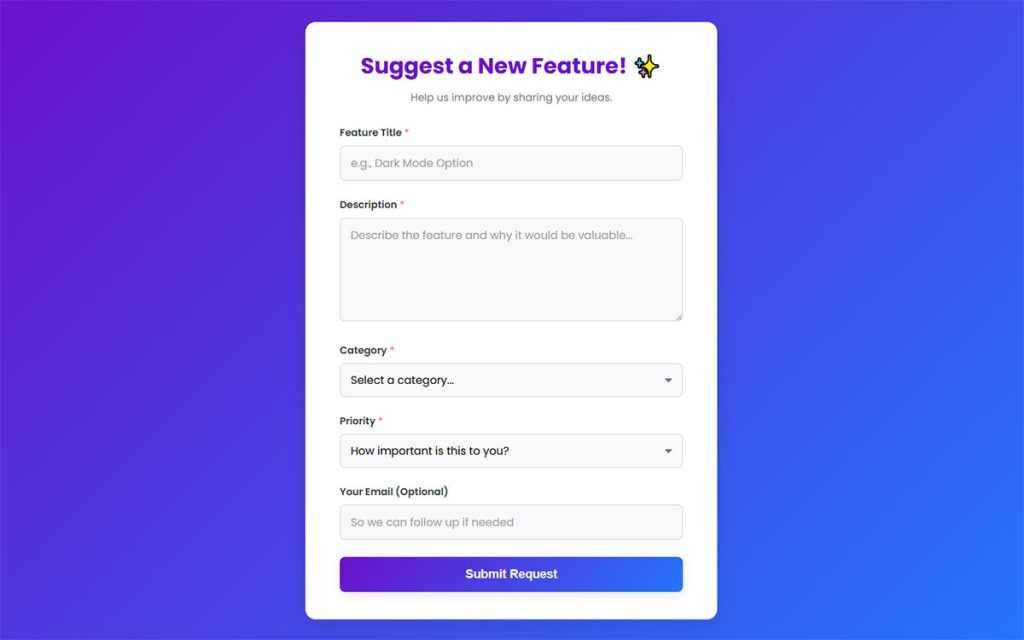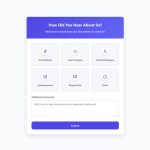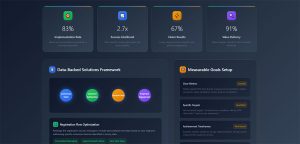You send a survey. Half your audience ignores it. The other half quits halfway through. Sound familiar? Survey fatigue is killing your response rates and destroying data quality. When participants…
Table of Contents
Ever struggled to collect useful feedback? The right form template makes all the difference between actionable insights and wasted opportunities.
Feedback forms are essential tools for businesses seeking to improve products, services, and overall customer satisfaction. From customer feedback questionnaires to employee evaluation sheets, these templates serve as the foundation for effective data collection.
Whether you’re using IvyForms or other options, or custom HTML form templates, selecting the appropriate design impacts your response rates and the quality of information gathered. The best templates incorporate a mix of Likert scale questions, open-ended questions, and multiple choice questions to capture comprehensive feedback.
This article showcases diverse feedback collection examples for various contexts—from product review templates to event feedback samples. You’ll discover how to implement form validation, increase submission rates, and integrate forms with CRM systems for maximum impact.
Examples Of Feedback Form Templates
Customer Feedback Form
See the Pen
Modern Customer Feedback Form by Bogdan Sandu (@bogdansandu)
on CodePen.
Product Feedback Form
See the Pen
Modern Product Feedback Form by Bogdan Sandu (@bogdansandu)
on CodePen.
Website Feedback Form
See the Pen
Modern & Vivid Website Feedback Form by Bogdan Sandu (@bogdansandu)
on CodePen.
Event Feedback Form
See the Pen
Modern Event Feedback Form by Bogdan Sandu (@bogdansandu)
on CodePen.
Employee Feedback Form
See the Pen
Modern Employee Feedback Form by Bogdan Sandu (@bogdansandu)
on CodePen.
Student Feedback Form
See the Pen
Modern Student Feedback Form by Bogdan Sandu (@bogdansandu)
on CodePen.
Training Feedback Form
See the Pen
Vibrant Training Feedback Form by Bogdan Sandu (@bogdansandu)
on CodePen.
Support Feedback Form
See the Pen
Modern Support Feedback Form by Bogdan Sandu (@bogdansandu)
on CodePen.
Feature Request Form
See the Pen
Feature Request Form by Bogdan Sandu (@bogdansandu)
on CodePen.
FAQ on Feedback Form Templates
What makes a good feedback form template?
A good feedback form balances question types with clear purpose. Include Likert scales for quantifiable data and open-ended questions for detailed insights. Effective templates feature logical flow, mobile responsiveness, and appropriate length to prevent survey fatigue. Consider form accessibility for all users.
How do I create a customer satisfaction survey?
Start with a clear goal. Use customer feedback questionnaires that include Net Promoter Score (NPS) questions. Incorporate rating scales and space for detailed comments. Many form builders offer customizable templates specifically designed for measuring Customer Satisfaction (CSAT). Keep it brief yet comprehensive.
What questions should I include in product feedback forms?
Include questions about product quality, usability, and value. Product review templates should cover:
- Overall satisfaction rating
- Specific feature feedback
- Comparison to alternatives
- Improvement suggestions
- Purchase likelihood
Tools like Google Forms provide excellent form validation options.
How can I improve response rates on feedback forms?
Boost submission rates by keeping forms short. Use response incentives like discounts or entries into giveaways. Consider survey timing – reach out when experiences are fresh. Mobile-friendly digital feedback forms with progress indicators typically achieve higher completion rates.
Should feedback forms be anonymous?
It depends on your goals. Anonymous survey templates often generate more honest responses for sensitive topics. However, identifiable testimonial collection templates allow for follow-up and personalized service recovery. Data privacy compliance with regulations like GDPR is essential regardless of your approach.
What’s the difference between qualitative and quantitative feedback questions?
Quantitative feedback uses structured formats like multiple choice questions and rating scale samples that produce numerical data for analysis. Qualitative feedback relies on open-ended questions to capture detailed opinions. Effective feedback collection examples combine both for comprehensive insights.
How do I analyze feedback form results?
Use tools with built-in form analytics like Qualtrics or Zoho Survey. Look for patterns in responses and segment data by customer type. Many platforms offer survey result visualization options. For complex analysis, export to specialized tools or integrate with marketing automation platforms via Zapier integration.
What are the best platforms for creating feedback forms?
Popular options include:
- IvyForms
- Google Forms (free, basic)
- SurveyMonkey (powerful analytics)
- Typeform (engaging user experience)
- JotForm (extensive template library)
- Microsoft Forms (Office integration)
- WordPress form plugins for website integration
Each platform offers various form embedding options.
How often should I send feedback forms?
Timing depends on your relationship with recipients. For service assessment forms, send immediately after interactions. For product review templates, wait until customers have adequate usage experience. Avoid overwhelming customers – consider implementing a coordinated Voice of Customer program to manage frequency.
How can I use conditional logic in feedback forms?
Conditional logic (also called skip logic or branching logic) shows questions based on previous answers. This creates personalized experiences and improves completion rates.
Conclusion
Finding the right examples of feedback form templates can transform your data collection strategy. Whether you’re using service assessment forms or workshop evaluation templates, the goal remains consistent: gathering actionable insights to drive improvement.
Form A/B testing has shown that thoughtfully designed templates significantly increase form submission rates. Companies implementing customer feedback management systems report greater success when their forms balance simplicity with depth.
Key takeaways for effective feedback forms:
- Include a mix of rating scale samples and descriptive questions
- Ensure mobile-friendly forms for maximum accessibility
- Consider form automation to streamline collection and analysis
- Respect data privacy compliance requirements
- Integrate forms with your CRM systems for holistic customer views
The right digital feedback forms serve as powerful bridges between you and your stakeholders.







